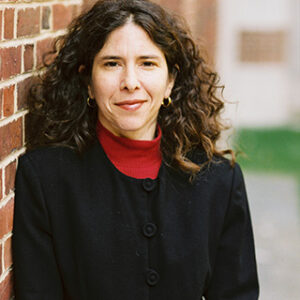Search Results
Back to JTS Torah Online's Main page
The Saint and the Zohar
May 1, 2015 By Vivian B. Mann <em>z”l</em> | Commentary | Aharei Mot | Kedoshim
We often think of Jewish life in Spain in terms of the massacres of 1391 and the Spanish Expulsion in 1492. But the art made for the Church between those two dates presents a more nuanced view of Christian–Jewish relations.
Read More
Outside the Camp
Apr 24, 2015 By Julia Andelman | Commentary | Metzora | Tazria
The double parashah of Tazria-Metzora ranks at the top of the list of parshiyot to avoid for a bar or bat mitzvah. Its detailed lists of bodily ailments—rashes, colorations, emissions, and secretions—associated with ritual impurity are not the stuff of religious inspiration in contemporary times. I confess to having once colluded with congregants to subtly move the date of their daughter’s bat mitzvah celebration slightly further away from her Hebrew birthday, in order to provide her with a more palatable Torah reading to chant and speak about than Tazria-Metzora. But this year—the year of #BlackLivesMatter—has caused me to read Tazria-Metzora through a new and painfully relevant lens.
Read More
Deeper Than the Skin
Apr 24, 2015 By Yitzhak Lewis | Commentary | Metzora | Tazria
Your body is a map of roads
To be taken,
And not taken
Alone.
Your skin enfolds what
Your eyes shut behind them,
All your past is bored into it
Every day with the awl of time.

The Liberated Bird: Let’s Talk Turkey
Apr 17, 2015 By Anne Lapidus Lerner | Commentary | Shemini
The main course at my Thanksgiving dinner—and perhaps at yours as well—is determined by a few verses in this week’s parashah, Shemini. After all, Leviticus 11 defines which living things are fit for kosher consumption, granting it a major impact on the Thanksgiving menu of kosher aviavores.
Read More
An Offering of Love
Apr 15, 2015 By Alisa Braun | Commentary | Shemini
What does a feminist reworking of Leviticus 10 sound like? The Indigo Girls song “Strange Fire” (1987) beautifully illustrates how biblical images and stories weave their way into our lives and the art we create. The song exemplifies their signature style: a second-wave feminist message wrapped in a spare acoustic sound, strong rhythms, and soft harmonies. The lyrics allude to the actions of Aaron’s sons as a way of critiquing those within organized religion who wield power and seek to silence voices of personal spiritual expression.
Read More
Miriam’s Song and the Role of Music in Prayer
Apr 10, 2015 By Walter Herzberg | Commentary | Pesah
After the sea was parted and the Israelites were rescued from the pursuing Egyptians, Moses and the children of Israel sang the Song of the Sea, praising God for having saved them. Following the conclusion of the song, the Torah relates that Miriam, leading the women, sang as well. What prompted Miriam and the women to rejoice with song, instrumental music and dance?
Read More
“I Will Go to the Mountain of Myrrh”
Apr 10, 2015 By Barbara Mann | Commentary | Pesah
The Song of Songs is an essential text for modern Hebrew culture, and was perhaps the most beloved biblical book of modernist authors such as S. Y. Agnon and artists such as Ze’ev Raban (1890–1970). Hebrew fiction writers and poets in Palestine in the interwar period plumbed the Song for its extensive lexicon describing the body and the landscape, and its sensitive depiction of psychological and sexual drama. Their modern descriptions of the land before them were often rendered in terms that recalled the erotic interiors and pastoral domain of the Song. Raban taught at the Bezalel Academy of Arts and Design in Jerusalem, and his Jugendstil (German Art Nouveau) illustrations of the Song of Songs (1923) are an exemplary cultural product of their time.
Read More
The Telling
Apr 2, 2015 By David Hoffman | Commentary | Pesah
This Friday evening we will gather with family and friends. We will sit down to beautifully set tables, and each of us will open one of the most popular and well-known of Hebrew books—the Haggadah. The name of the book comes from the Hebrew verb lehagid (“to tell”), and if we were to translate “haggadah” into English, it would be “the telling.” Not surprisingly, the core of the Haggadah is the section called maggid, a word that also derives from the Hebrew root meaning “to tell.” Clearly these two forms of the verb lehagid communicate the centrality of the activity of “telling” on this night. But here things become less clear.
Read More
“Echad Mi Yodea” (“Who Knows One?”)
Apr 2, 2015 By Sarah Diamant | Commentary | Pesah
“Echad Mi Yodea” is a traditional cumulative-number song found in the Haggadah. Each verse circles back to the Oneness of God.
Read More
Restoration
Mar 27, 2015 By Craig Scheff | Commentary | Shabbat Hagadol | Tzav
“What is certain is that you love bringing things back to life. It is a wonderful feeling to identify the undermining factors, eradicate them, and restore something to its true glory.”
Strengthsfinder 2.0 is a popular assessment tool for identifying and applying an individual’s strengths. The book is based on the premise that we should spend more time in our professional lives building upon our strengths than trying to overcome our weaknesses. The quote above refers to the person who possesses the “restorative” talent, the ability to resuscitate and rekindle the vitality of relationships.
Read More
The Four Parents
Mar 27, 2015 By Arnold M. Eisen | Commentary | Shabbat Hagadol | Pesah
Let’s think for a moment, inspired by one of the seder’s most famous passages, about the four kinds of parents who are found around the seder table: wise, wicked, innocent, and not knowing how to ask.
Read More
Crackers for God
Mar 16, 2015 By William Friedman | Commentary | Shabbat Hahodesh | Vayikra | Pesah
What kind of gift would you give a king? In the interests of both respect and self-preservation, probably the nicest thing you could afford! And if you’d give this to a human king, how much more would you give to the King of Kings of Kings? And yet the Torah prescribes that any grain offered in the Temple cannot contain either yeast or honey. That’s right: the only appropriate grain offering for God is matzah—the tasteless cracker that is about to become the source of so much complaining on Passover! Why would the Torah tell us to do such a thing?
Read More
The Artist’s Insight
Mar 13, 2015 By Lilly Kaufman | Commentary | Pekudei | Vayak-hel
From October of last year until mid-February, the Museum of Modern Art in New York City, in collaboration with Tate Modern in London, featured a comprehensive exhibition entitled Henri Matisse: The Cut-Outs. It was a reassessment of Matisse’s colored paper cut-outs, which, according to the program notes, “reflect…a renewed commitment to form and color, and . . . inventiveness”. Matisse himself said, “For me, a colour is a force. My pictures are made up of four or five colours that collide with one another, and the collision gives a sense of energy.” (Sooke, Henri Matisse: A Second Life, pp. 97-98.)
Read More
Nediv Lev
Mar 13, 2015 By Michael R. Boino | Commentary | Pekudei | Vayak-hel
We often think of love as something comfortable, something comforting. The truth is, it can be the exact opposite. True, unbounded love from another source can cause us to confront parts of ourselves with which we are uncomfortable: our vulnerability, our self image, our passive role as the recipient of care rather than as a caregiver.
Read More
Shattered Tablets
Mar 6, 2015 By Daniel Heschel Silberbusch | Commentary | Ki Tissa
What fascinates me about this moment in the Torah (Ex. 32:15-19) is what we forget because we too well remember how the story ends.
Read More
Amalek
Feb 27, 2015 By Jan Uhrbach | Commentary | Shabbat Zakhor | Purim
The Shabbat prior to Purim, known as Shabbat Zakhor, takes its name from the first word of the special maftir (additional Torah reading) for the day, which retells the story of the first post-enslavement attack against the newly freed Israelites:
Read MoreRemember (zakhor) what Amalek did to you on your journey, after you left Egypt . . . You shall blot out the memory of Amalek from under heaven. Do not forget! (Deuteronomy 25:17-19)

Written on the Heart
Feb 27, 2015 By Eitan Fishbane | Commentary | Shabbat Zakhor | Tetzavveh
The mitzvot are a path of spiritual practice, a cultivation of religious awareness that may open us to the mystery and urgency of the divine voice. Not only legal obligation, mitzvah is a moment of encounter with the ever-renewing Divine Presence as it reverberates through the generations of the Jewish people.
Read More
The Construction of the Tabernacle From the Hebrew Republic (1700)
Feb 20, 2015 By Library of the Jewish Theological Seminary | Commentary | Terumah
The Hebrew Republic (De Republica Hebraeorum in the original Latin) was written in the aftermath of Dutch independence from Spain. Petrus Cunaeus principally drew from biblical and Talmudic sources and from Maimonides’s Mishneh Torah in order to reconstruct (or, in reality, construct) the development, structure, and challenges of an ancient Hebrew republic, with the intention of providing a model for the emerging Dutch republic that was both religious and practical.
Read More
Gold and Incense: For Better and for Worse
Feb 20, 2015 By Stephen A. Geller | Commentary | Terumah
Parashat Terumah begins the long section of the Book of Exodus that deals with the Tabernacle, its furniture and vessels, and the garments of the high priest. The only interruption in this mass of cultic detail is the narrative of the sin of worshipping the Golden Calf and its aftermath in Exodus 32–34. The ritual details continue into Vayikra with the list of sacrifices in the cult. The climax of the entire cultic section is Leviticus 9 and 10, where the Tabernacle is dedicated with elaborate rites.
Read More
I Can’t Stand My Neighbor, but His Ox Needs a Hand
Feb 13, 2015 By Joel Alter | Commentary | Mishpatim
A rabbi and an astronomer have the middle and window seats on a long-haul flight while the fellow on the aisle is a champion sleeper. As neither of our sophisticated travelers is taking a stroll anytime soon, the astronomer begins to talk: “Tell me, rabbi. What, essentially, is Judaism for?” The rabbi thinks a bit, casting about for a reasonable response. He offers a few broad strokes and believes he’s done about as well as might be expected. The traveler responds, “All these rules and teachings and traditions, rabbi! Can’t it all be boiled down to ‘Be Nice?’” The rabbi nods and says, “All these galaxies and black holes and neutrinos and supernovas . . . professor, can’t it all be boiled down to ‘Twinkle, twinkle little star?’”
Read MoreSUBSCRIBE TO TORAH FROM JTS
Our regular commentaries and videos are a great way to stay intellectually and spiritually engaged with Jewish thought and wisdom.




